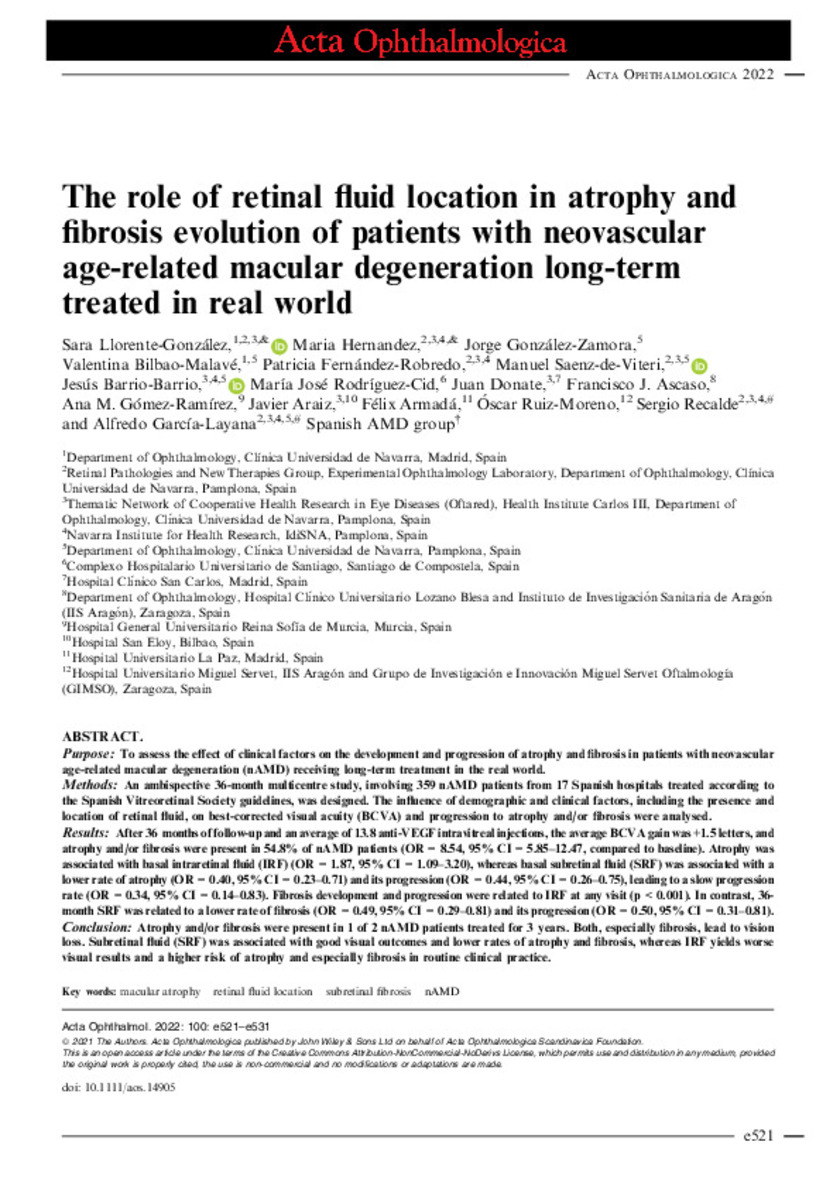The role of retinal fluid location in atrophy and fibrosis evolution of patients with neovascular age-related macular degeneration long-term treated in real world
Palabras clave :
Macular atrophy
Retinal fluid location
Subretinal fibrosis
nAMD
Fecha de publicación :
2022
Nota:
This is an open access article under the terms of the Creative Commons Attribution-NonCommercial-NoDerivs License
Cita:
Llorente-González, S. (Sara); Hernandez, M. (María); González-Zamora, J. (Jorge); et al. "The role of retinal fluid location in atrophy and fibrosis evolution of patients with neovascular age-related macular degeneration long-term treated in real world". Acta Ophthalmologica. 100 (2), 2022, 521 - 531
Aparece en las colecciones:
Estadísticas e impacto
0 citas en

0 citas en

Los ítems de Dadun están protegidos por copyright, con todos los derechos reservados, a menos que se indique lo contrario.








